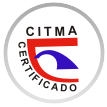Diversidad de escolítidos en plantaciones de Tectona grandis L. F. en la provincia de Esmeraldas, Ecuador
Resumen
El presente estudio tuvo como objetivos identificar y determinar la diversidad de los escolítidos su abundancia e índice de diversidad asociados a plantaciones de Tectona grandis L. f. (teca). Este estudio fue realizado en los sitios Zambrano, La Mala y Tepeyac, ubicados en el cantón Esmeraldas, provincia de Esmeraldas. Para determinar la diversidad se colocaron 36 trampas de intersección de vuelo a una altura de 1,30 m, al nivel del suelo, las trampas fueron cebadas con 175 ml de alcohol 96° y 75 ml de agua destilada. La recolección de los insectos se realizó cada ocho días, durante dos meses, desde finales del mes de julio hasta mediados de septiembre del 2018. La identificación se llevó a cabo en el laboratorio de microbiología de la UTEQ con la ayuda de un estereomicroscopio y claves dicotómicas. Para determinar la abundancia e índice de diversidad de escolítidos, se procedió a identificar árboles que presentaban sintomatología de muerte regresiva y marchitez vascular, luego fueron apeados nueve árboles enfermos por sitio y seccionados cada cuatro metros, posterior se procedió abrir la madera para la recolección de insectos, los cuales fueron depositados en frascos con alcohol de 70°, para la respectiva identificación. Los escolítidos que fueron recolectados mediante las trampas tuvo un total de 3747 insectos, siendo el género más abundante Hypothenemus sp. y las especies Xyleborus affinis y Premnobius cavipennis. Mientras que los escolítidos más abundantes que se encontraron dentro de la madera fueron: Xyleborus ferrugineus, Coptoborus sp. y Premnobius cavipennis.
Palabras clave:
Escolítidos, sintomatología, claves dicotómicas.
ABSTRACT
The present study aimed to identify and determine the diversity of scolithids, their abundance and diversity index associated with plantations of Tectona grandis L. f. (teak). This study was carried out at the Zambrano, La Mala and Tepeyac sites, located in the Esmeraldas canton, Esmeraldas province. To determine diversity, 36 flight intersection traps were placed at a height of 1.30 m, at ground level, the traps were baited with 175 ml of 96 ° alcohol and 75 ml of distilled water. The insects were collected every eight days, for two months, from the end of July to mid-September 2018. The identification was carried out in the UTEQ microbiology laboratory with the help of a stereomicroscope and keys dichotomous. To determine the abundance and diversity index of scolithids, we proceeded to identify trees that presented symptoms of regressive death and vascular wilting, then nine diseased trees were felled per site and sectioned every four meters, later the wood was opened for the collection of insects, which were deposited in bottles with 70 ° alcohol, for the respective identification. The scolithids that were collected through the traps had a total of 3747 insects, the most abundant genus being Hypothenemus sp. and the species Xyleborus affinis and Premnobius cavipennis. While the most abundant scolithids found within the wood were: Xyleborus ferrugineus, Coptoborus sp. and Premnobius cavipennis.Keywords:
Scolithids, symptoms, dichotomous keys.Descargas
Publicado
Cómo citar
Número
Sección
Licencia
La editorial "Universo Sur", de la Universidad de Cienfuegos, publica el contenido de la Revista "Universidad y Sociedad" bajo una Licencia Creative Commons Atribución-NoComercial-SinDerivar 4.0 Internacional.
© Podrá reproducirse, de forma parcial o total, el contenido de esta publicación, siempre que se haga de forma literal y se mencione la fuente.









